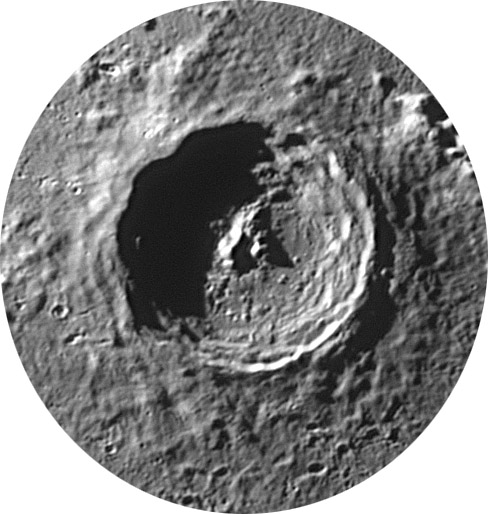Difference between revisions of "December 20, 2008"
| Line 14: | Line 14: | ||
<br /> | <br /> | ||
<strong>Related Links</strong><br /> | <strong>Related Links</strong><br /> | ||
| − | Rükl plate [https://the-moon.us/wiki/ | + | Rükl plate [https://the-moon.us/wiki/Rukl_Index_Map ?]<br /> |
<br /> | <br /> | ||
<p><b>Yesterday's LPOD:</b> [[December 19, 2008|Close-Up of a Rille]] </p> | <p><b>Yesterday's LPOD:</b> [[December 19, 2008|Close-Up of a Rille]] </p> | ||
Latest revision as of 18:45, 13 October 2018
Stripped of Context

image by Christian Viladrich, France
Craters are like people, but even more so. There is one basic morphology for a man, with lots of minor variations that make individuals relatively unique. For craters the range of variation seems more limited so that craters tend to look very similar. Except that each has a geographic context that usually provides a unique setting - isolated on a mare, overlapping an older feature, being inside a larger crater, etc. If we strip away the context the similar design of craters becomes more apparent, and they tend to lose their identity. For example, which is this relatively pristine complex crater? How can you tell? Is it as interesting without context? If it were person it might ask, Do you love me for me, or for my friends and family? I think, for craters, it's often the friends and neighborhoods that make a crater a favorite.
Chuck Wood
Technical Details
24 August 2008- 2h23mnUT - Grand Colombier Celestron 14 (extender QX1.6 Takahashi) + Skynyx 2.1M video camera Astronomik red filter; 300 images.
Related Links
Rükl plate ?
Yesterday's LPOD: Close-Up of a Rille
Tomorrow's LPOD: Humans First Leave Earth
COMMENTS?
Register, Log in, and join in the comments.



